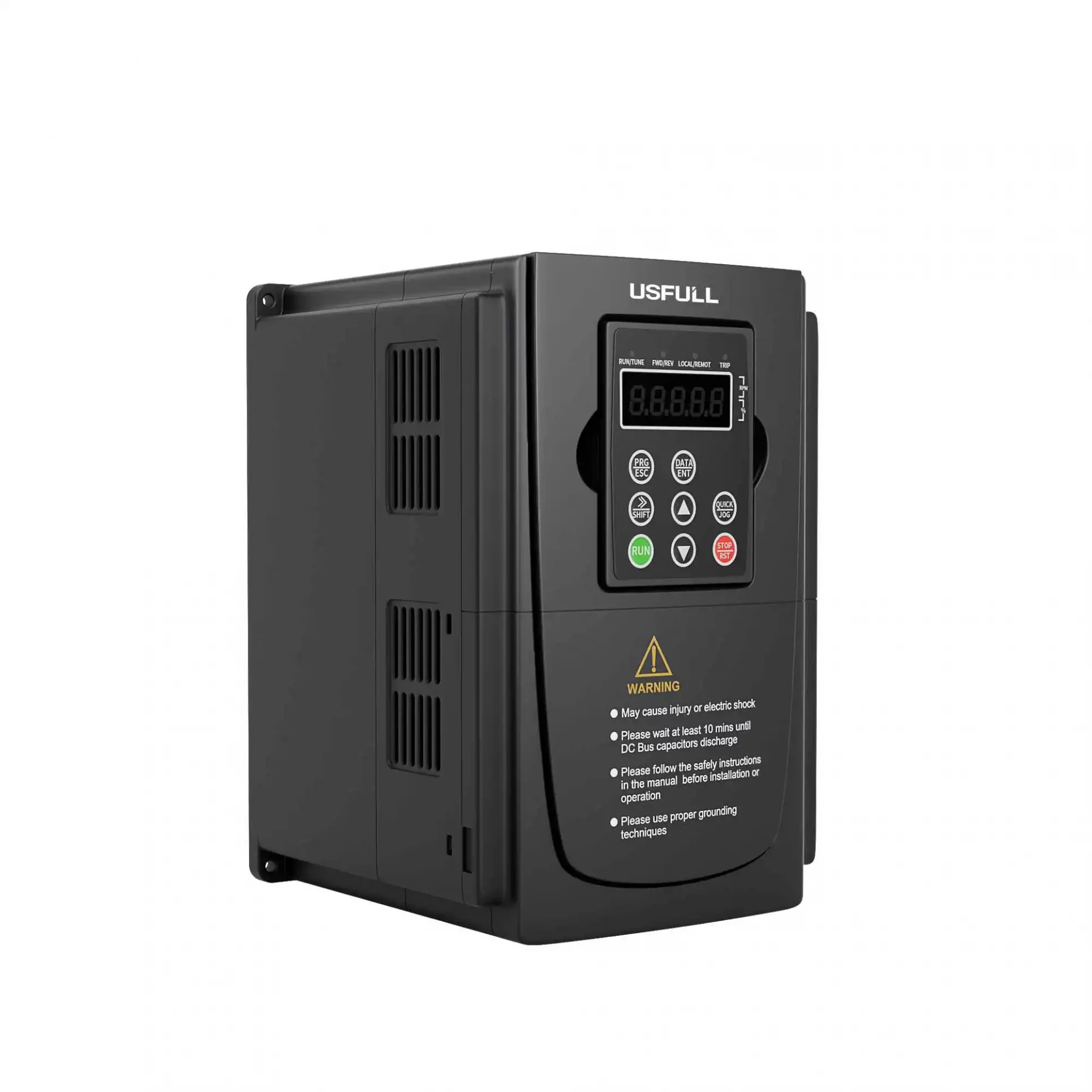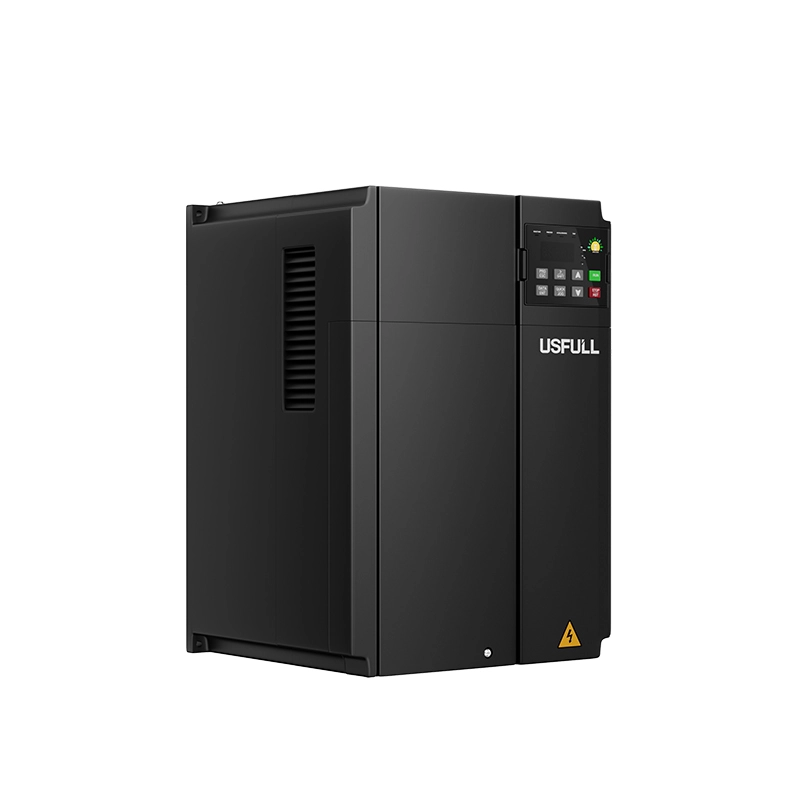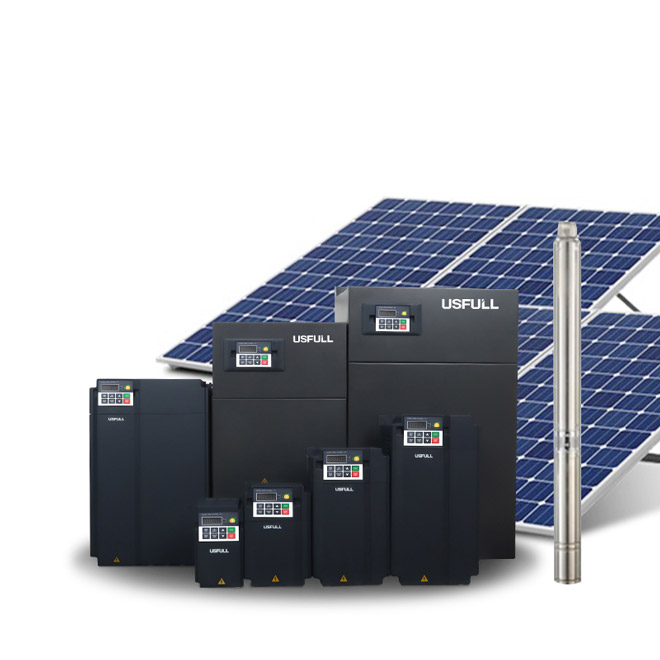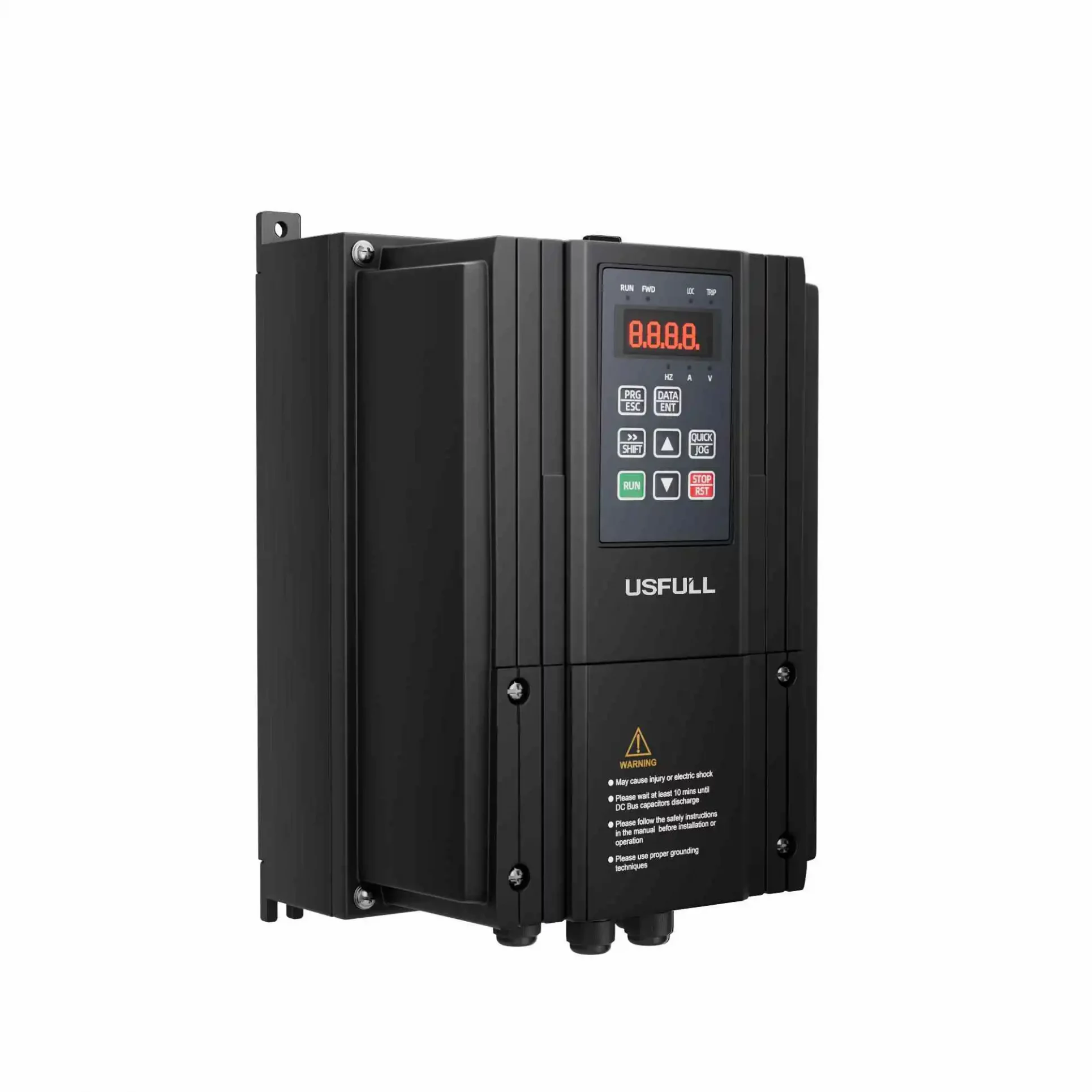1. Frequency Inverter V/F Control Mode
Voltage-to-frequency (V/F) control mode entails maintaining a constant ratio between voltage (V) and frequency (F). In other words, the output voltage’s amplitude is directly proportional to the output frequency.
The term “V” represents the amplitude of voltage produced by the frequency inverter, while “F” signifies the frequency of the frequency inverter’s output voltage. Consequently, an increase in the output frequency prompts a corresponding rise in the output voltage’s amplitude, maintaining a proportional relationship. The key principle is to sustain a constant magnetic flux by preserving the V/F ratio.
V/F control is often employed in motor control scenarios to ensure a consistent motor flux. This mode offers attributes such as favorable cost-effectiveness and steady output torque, emphasizing constant magnetic flux regulation. However, precision in speed control is less pronounced. It proves suitable for applications where energy conservation objectives are moderate and stringent speed accuracy demands are absent. Notably, at low speeds, it might lead to insufficient torque, necessitating torque compensation.
The V/F control mode is apt for loads characterized by variable and constant torque requirements, such as fans, water pumps, and belt conveyors.
.webp)
2. Frequency Inverter Slip Frequency Control (V/F Closed-Loop Control)
Due to inherent speed differences (∆n) in motors, corresponding to proportional torque (T) variations, adjusting the frequency inverter’s output frequency alters the slip (∆n) and, consequently, the frequency inverter’s output torque (T) and speed. This principle, known as slip frequency control, manipulates the motor’s torque by regulating the slip, effectively controlling motor speed.
To achieve these control objectives, a closed-loop control strategy is imperative, necessitating an frequency inverter equipped with a closed-loop feedback input terminal. A slip frequency control frequency inverter integrates a comparison circuit and a Proportional-Integral-Derivative (PID) control circuit to process reference and feedback signals. This enables fine-tuned control speed and rapid response. Two methodologies exist: one employing a speed sensor to use motor speed as feedback for enhanced precision, and the other converting indirect parameters (e.g., pressure, flow, temperature) into feedback signals for heightened accuracy.
In this closed-loop system, the inverter establishes a target value and contrasts it against the feedback value. If the feedback is less than the target, the frequency inverter issues a frequency increment, elevating both slip (∆n) and torque proportionately, thus increasing the motor speed. Conversely, a frequency decrement signal reduces slip (∆n) and consequently torque, leading to a decrease in motor speed, aligning with the designated target.
Distinguishing it from V/F control, slip frequency control entails PID function setup within the frequency inverter and requires a feedback terminal. External PID control boards are necessary for closed-loop control using U/F (Voltage-to-Frequency) techniques.
3. Frequency Inverter Vector Control
Vector control employs a control methodology simulating DC motors through the frequency inverter’s internal electronic circuitry to govern AC motors.
1. The control signal divides into excitation and armature components, mirroring DC motor control methods.
2. The control signal transforms into a three-phase AC control signal, tailored to three-phase AC motor control demands, energizing the frequency inverter’s output inverter circuitry.
Vector control offers two approaches: sensor less (utilizing internal inverter feedback) and sensor-based (external feedback). Both methods directly regulate motor speed (or torque) but cannot extend to managing other variables like pressure, flow, or temperature.
This technique ensures precise speed and torque control while manipulating current amplitude and phase. Furthermore, vector control boasts software-configurable attributes, including self-scanning for motor parameter incorporation into the frequency inverter, one-to-one motor-frequency inverter pairing, and comprehensive current manipulation.
4. Frequency Inverter Direct Torque Control
Direct Torque Control (DTC) stands as another advanced AC speed regulation technology following vector control. This methodology employs space vector and stator field orientation analysis to mathematically model asynchronous motors within the stator coordinate system. It computes and governs motor flux linkage and torque, limiting torque fluctuations within a specific slip range through a discrete two-point regulator (Band-Band control). This is achieved by comparing torque detection with predefined values. The slip is regulated via frequency adjustment and pulse width modulation (PWM), influencing frequency inverter switching states and yielding high-performance torque output.
DTC is also restricted to one-to-one motor-frequency inverter relationships, rendering it unsuitable for process control applications.
Noteworthy attributes encompass the ability to control from zero speed, a wide speed range, precise torque control, rapid system response, and high-speed control accuracy.
Vector control is well-suited for torque-intensive tasks with constant torque output even at 0Hz, such as papermaking, steel rolling, machine tools, and lifting. Meanwhile, torque control proves effective for applications like papermaking and dyeing machinery, maintaining constant tension during film or wire winding/unwinding by precisely controlling torque and speed.




